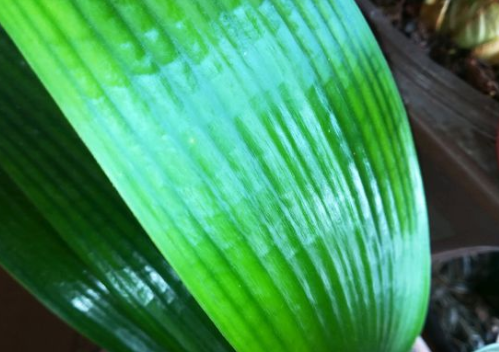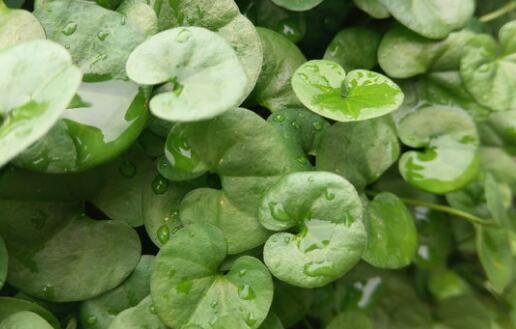What is the reason why the leaves of Cymbidium are very thin? How to solve it? These breeding methods and matters needing attention should be known!
People who have raised flowers all know that Cymbidium has a delicate and elegant appearance, but in the process of breeding, it is found that the leaves of Cymbidium are very thin, what is the reason? How to solve this problem?
First, what is the reason why the leaves of Cymbidium are very thin? How to solve it?
1. Lack of light
For plants, insufficient light conditions have a great impact on growth, and if photosynthesis is not adequately replenished, then the synthesis of nutrients will be a problem, making the leaves fleshy and the leaves growing thinner accordingly. Only give it enough light to carry out photosynthesis to supplement the chlorophyll needed by the plant, making the leaves thicker.
2. Poor growth
This reason is generally more in the summer, we all know that the summer weather is very hot, the plant growth environment temperature exceeds a certain limit will enter a dormant state, so if the maintenance is not careful enough, it will cause growth problems, and high-temperature water evaporation is very fast, coupled with nutrients can not keep up, the flesh of the leaves will become thinner, the leaves will naturally become thinner.

3. Insufficient fertility of basin soil.
Many people often do not care about growing flowers, and their conservation is not careful enough. After a long time, the fertility of the soil has been exhausted. If the soil is not changed in time, the absorbed leaves of plants that cannot get nutrients will wilt and become thinner, and some will even turn yellow. therefore, it is necessary to change the soil every once in a while, otherwise the soil fertility will not be able to keep up. 、
4. Too much water, resulting in stagnant water
Often watering is a task that is difficult for most people to control and master, and this amount is difficult to control. Here we teach you a little skill. Before watering, we first touch the flower soil with our hands to feel the humidity. Only in this way can we ensure that the timing of watering is right. Another thing is that when watering, we must pay attention to stop watering immediately after there is water flowing out of the tray. In this way, the thin leaves caused by too much watering can be avoided.
II. Culture methods and matters needing attention of Cymbidium
1. The gentleman orchid bears shade and likes the damp and cool environment. Summer cultivation should try to avoid the sun, above 15 degrees, below 25 degrees, the most suitable for its growth. Winter needs to consider how to create a warm environment to make it safe through the winter.
2. Cymbidium is a famous flower, but the flowerpot is not the more refined the better. although the lowest-end sukiyaki flowerpot does not look beautiful, its air permeability is incomparable to that of the general flowerpot. For the root of the orchid, breathability is the most important. The air permeability of the old flowerpot for many years is poor, so it should be soaked and cleaned and then exposed to the sun before it can be used.
3. Soil is the foundation of growing flowers. The bottom of the flowerpot had better be covered with tiles, which is conducive to the elimination of stagnant water. Flower soil can refer to the following formula: rotten leaf soil accounts for 50%, coarse sand accounts for 15%, charcoal gravel accounts for 20%, mature fertilizer accounts for 15% (mature fertilizer should try to avoid direct contact with flower roots).
4. The grown-up magnolia changes soil once a year, which is suitable for spring and autumn. When changing the soil, the rotten roots and dried roots should be cut off. Fill the roots with soil, otherwise, it will be difficult for water and nutrients to reach the roots. After changing the soil, water should be watered thoroughly.
5. The root of Cymbidium is fleshy, and the stagnant water in the flowerpot is easy to cause rotten root phenomenon. Water evaporation is less in winter, so watering times should be reduced appropriately. It is usually recommended to use a spray can to clean the leaves to increase humidity and water three birds with one stone. The method of watering roots should be taken during the flowering period, but the flowerpot must not store water.
6. The principle of watering is: no dryness, no watering, no watering. The root system of Cymbidium is well developed, coupled with soil consolidation and other reasons, sometimes it is difficult to water thoroughly. You can put the flowerpot as a whole into a bucket or laundry basin and take it out in about 1 minute.
7. Watering in summer should also pay attention to the phenomenon of water vapor isolation. The soil on the surface of the flowerpot looks dry, but in fact, the soil at the root is still very wet. If you water it at this time, it is easy to cause the root of the gentleman orchid to rot.
8. Watering and fertilization are best carried out at the same time. During the peak growth period, fully fermented fertilizer water or rice washing water can be applied every 15-20 days, and special fertilizer can be bought, but it is best not to apply chemical fertilizer.
9, summer is more difficult for the orchid, to put the orchid in a ventilated place, it is best to put it on the pool or basin (with a plank), and often spray water around the plant and leaves to improve the warm and humid environment. Fertilization should be controlled with little or no application as far as possible. When watering, you must be careful not to let water flow into the heart of the leaves, so as to avoid rotten heart disease.
10. Like other plants, Magnolia also has phototaxis, so the position and direction of placement must be moved frequently. The other side does not grow very well, so put the other side in the sunny position, so that you can grow symmetrically.
Time: 2019-04-06 Click:
- Prev

How much is the market price of Artemisia angustifolia? How to cultivate in hydroponics? How long will it take to sprout?
Money grass, also known as mirror grass, is a symbol of wealth. It is viewed as a small potted plant because of its round and petite leaves. At present, many people like to plant it on their own balcony to improve the effect of indoor viewing.
- Next

Rosemary wilt. What's going on?
Rosemary wilt. What's going on?
Related
- Fuxing push coffee new agricultural production and marketing class: lack of small-scale processing plants
- Jujube rice field leisure farm deep ploughing Yilan for five years to create a space for organic food and play
- Nongyu Farm-A trial of organic papaya for brave women with advanced technology
- Four points for attention in the prevention and control of diseases and insect pests of edible fungi
- How to add nutrient solution to Edible Fungi
- Is there any good way to control edible fungus mites?
- Open Inoculation Technology of Edible Fungi
- Is there any clever way to use fertilizer for edible fungus in winter?
- What agents are used to kill the pathogens of edible fungi in the mushroom shed?
- Rapid drying of Edible Fungi

